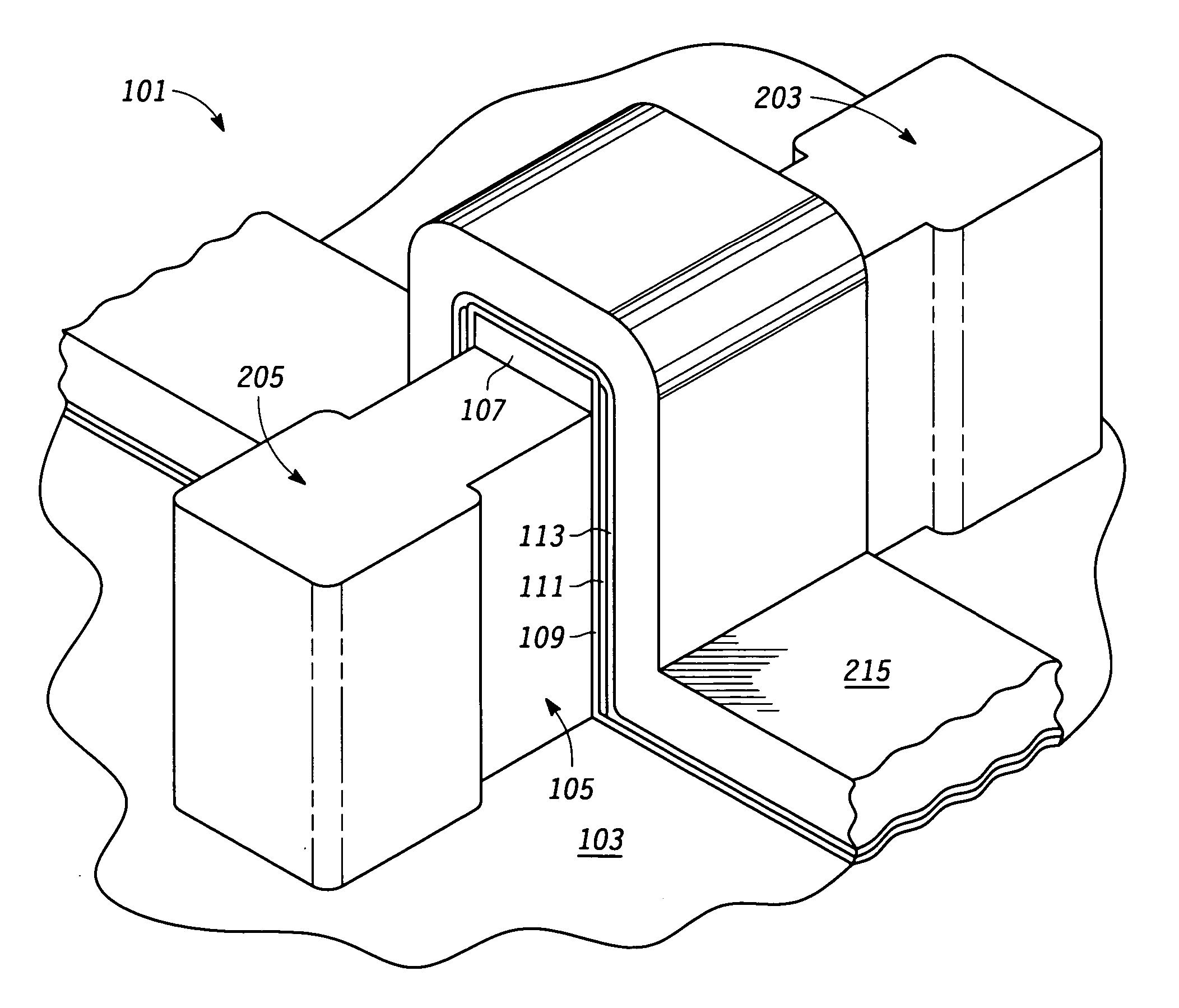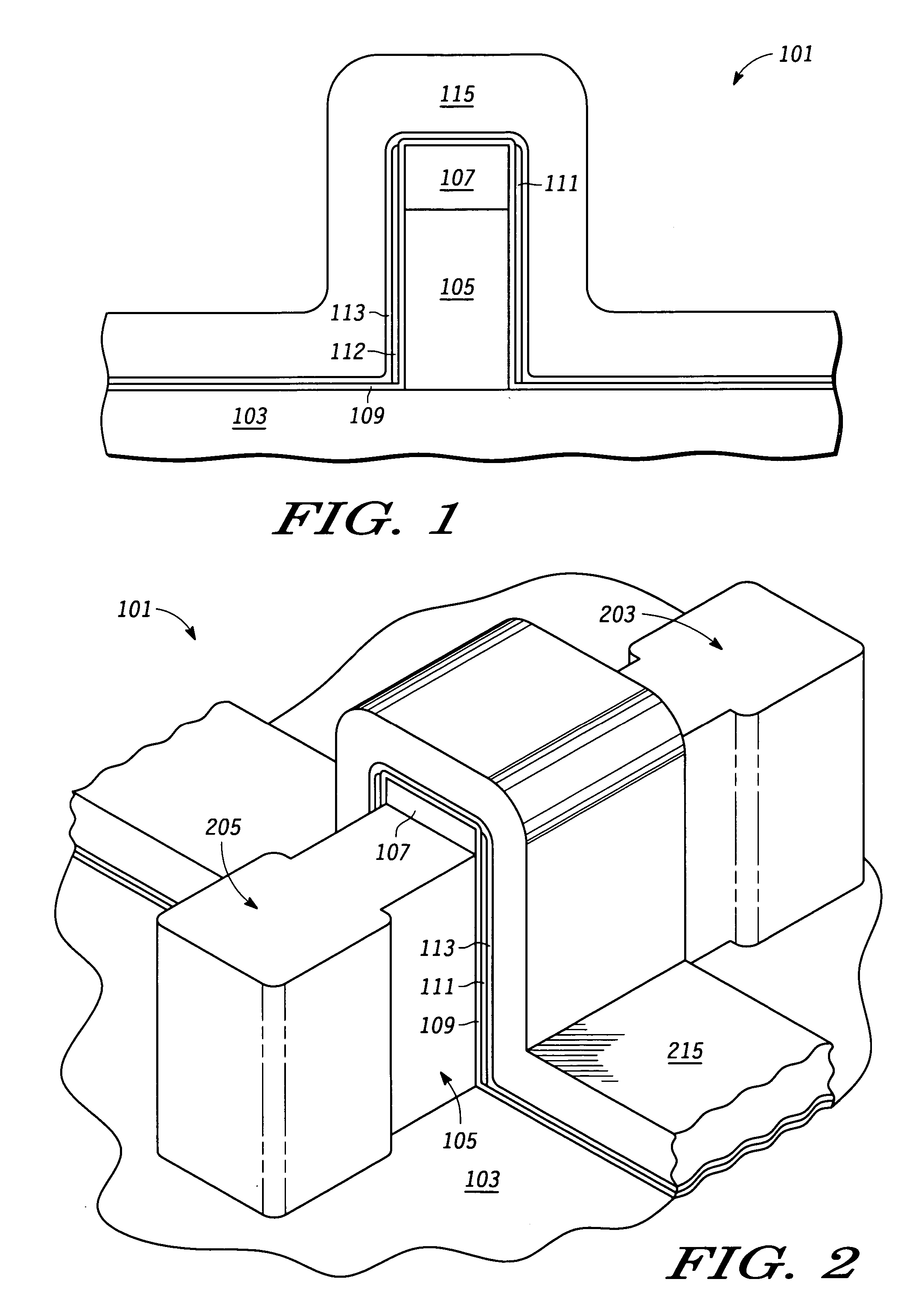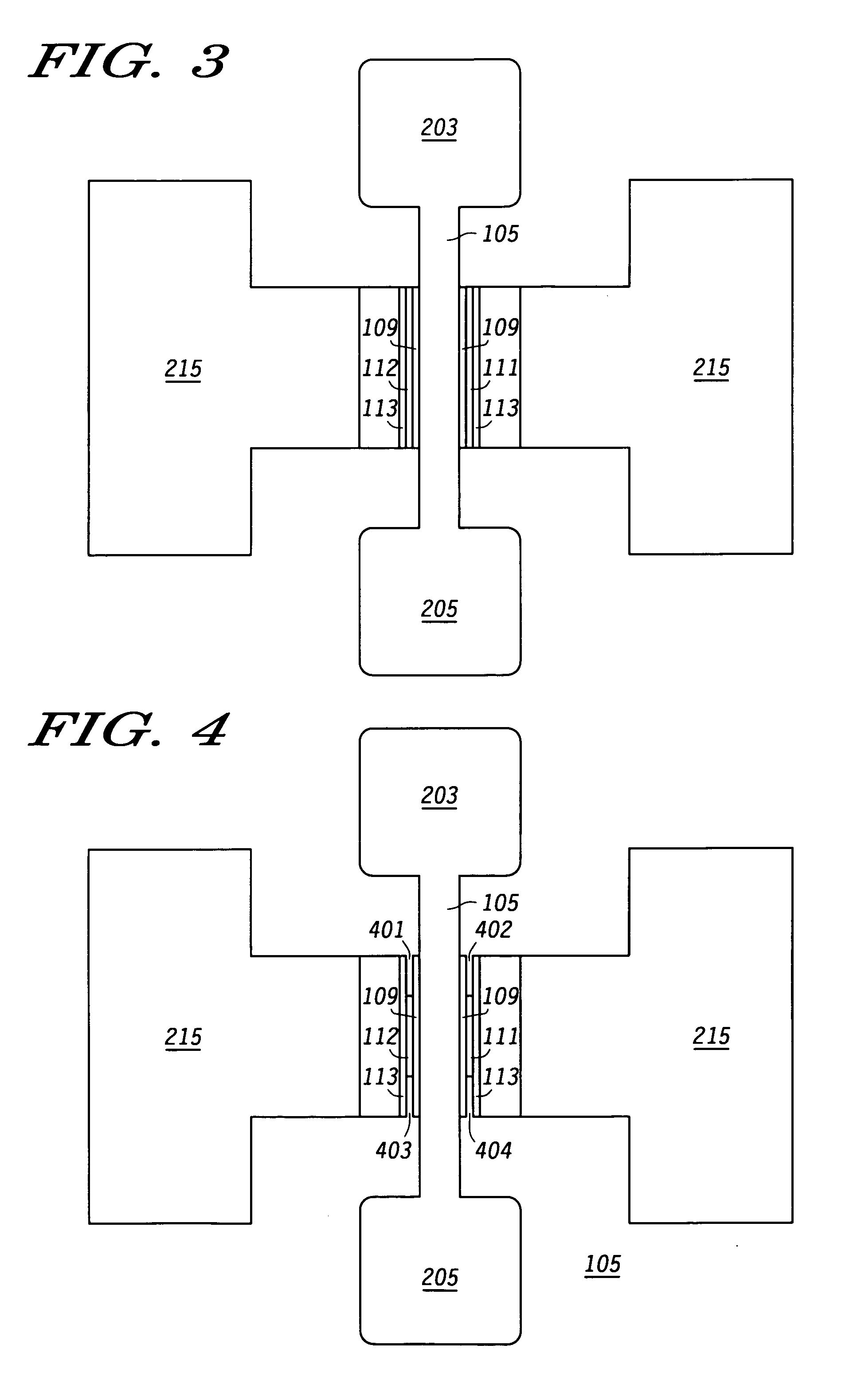Charge storage structure formation in transistor with vertical channel region
a transistor and vertical channel technology, applied in the field of semiconductor devices, can solve problems such as the possibility of charge moving between charge storage locations
- Summary
- Abstract
- Description
- Claims
- Application Information
AI Technical Summary
Problems solved by technology
Method used
Image
Examples
Embodiment Construction
[0015] The following sets forth a detailed description of a mode for carrying out the invention. The description is intended to be illustrative of the invention and should not be taken to be limiting.
[0016]FIG. 1 is a partial side cross sectional side view of a wafer utilized to form a multi-bit memory cell according to one embodiment of the present invention. Wafer 101 includes an insulating layer 103. In one embodiment, layer 103 is located over a semiconductor substrate (not shown). A semiconductor fin structure 105 and cap 107 are formed by pattering a semiconductor layer (not shown) and dielectric layer (e.g. oxide, silicon nitride) (not shown) over the semiconductor layer. In one embodiment, fin structure 105 is monocrystalline silicon but may be of other semiconductor materials (e.g. silicon germanium) in other embodiments. Also, cap 107 may be of other materials in other embodiments.
[0017] After the patterning to form fin structure 105 and cap 107, a dielectric layer 109 i...
PUM
 Login to View More
Login to View More Abstract
Description
Claims
Application Information
 Login to View More
Login to View More - R&D
- Intellectual Property
- Life Sciences
- Materials
- Tech Scout
- Unparalleled Data Quality
- Higher Quality Content
- 60% Fewer Hallucinations
Browse by: Latest US Patents, China's latest patents, Technical Efficacy Thesaurus, Application Domain, Technology Topic, Popular Technical Reports.
© 2025 PatSnap. All rights reserved.Legal|Privacy policy|Modern Slavery Act Transparency Statement|Sitemap|About US| Contact US: help@patsnap.com



